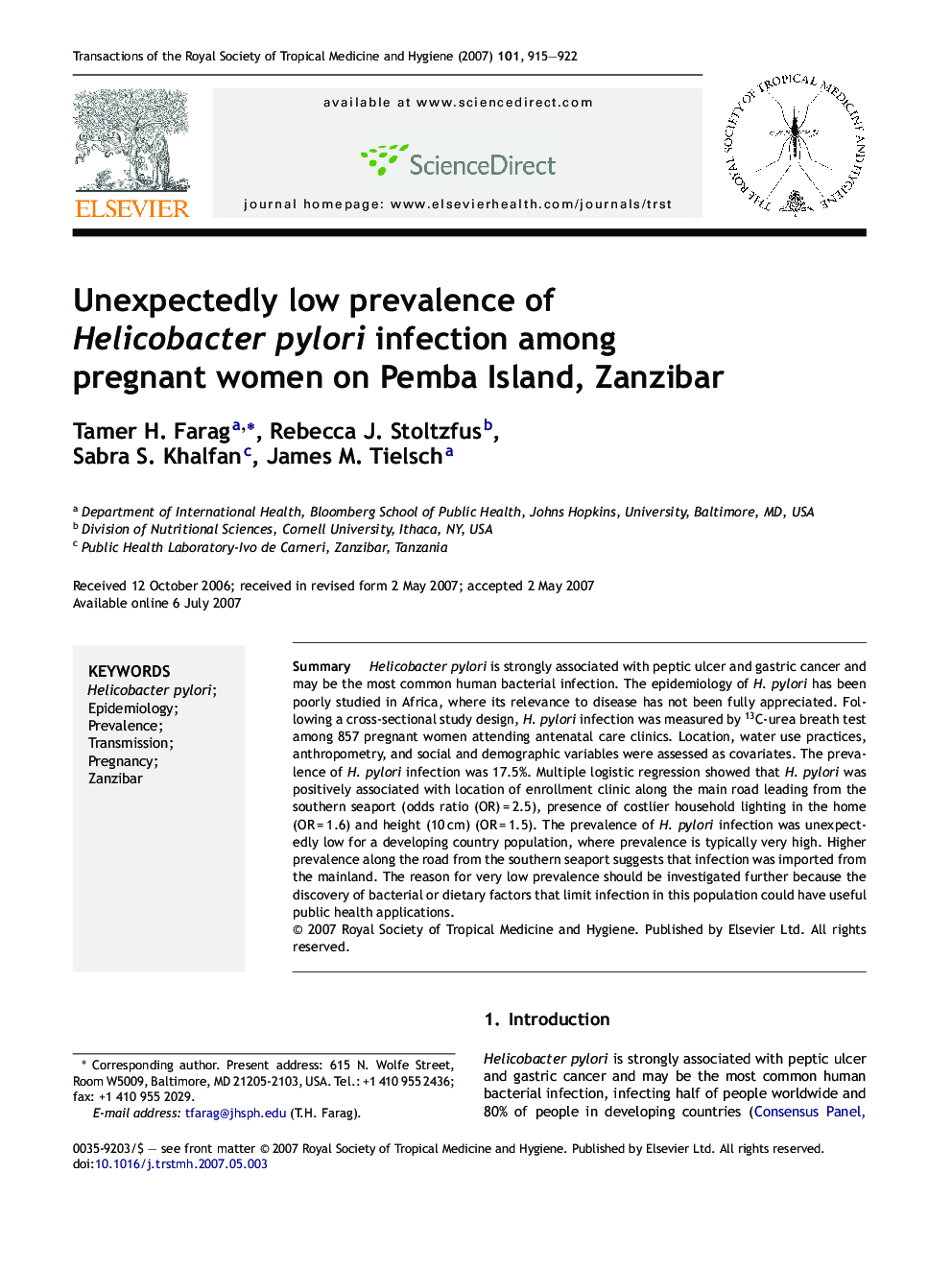| Article ID | Journal | Published Year | Pages | File Type |
|---|---|---|---|---|
| 6137629 | Transactions of the Royal Society of Tropical Medicine and Hygiene | 2007 | 8 Pages |
Abstract
Helicobacter pylori is strongly associated with peptic ulcer and gastric cancer and may be the most common human bacterial infection. The epidemiology of H. pylori has been poorly studied in Africa, where its relevance to disease has not been fully appreciated. Following a cross-sectional study design, H. pylori infection was measured by 13C-urea breath test among 857 pregnant women attending antenatal care clinics. Location, water use practices, anthropometry, and social and demographic variables were assessed as covariates. The prevalence of H. pylori infection was 17.5%. Multiple logistic regression showed that H. pylori was positively associated with location of enrollment clinic along the main road leading from the southern seaport (odds ratio (OR)Â =Â 2.5), presence of costlier household lighting in the home (ORÂ =Â 1.6) and height (10Â cm) (ORÂ =Â 1.5). The prevalence of H. pylori infection was unexpectedly low for a developing country population, where prevalence is typically very high. Higher prevalence along the road from the southern seaport suggests that infection was imported from the mainland. The reason for very low prevalence should be investigated further because the discovery of bacterial or dietary factors that limit infection in this population could have useful public health applications.
Related Topics
Life Sciences
Immunology and Microbiology
Applied Microbiology and Biotechnology
Authors
Tamer H. Farag, Rebecca J. Stoltzfus, Sabra S. Khalfan, James M. Tielsch,
